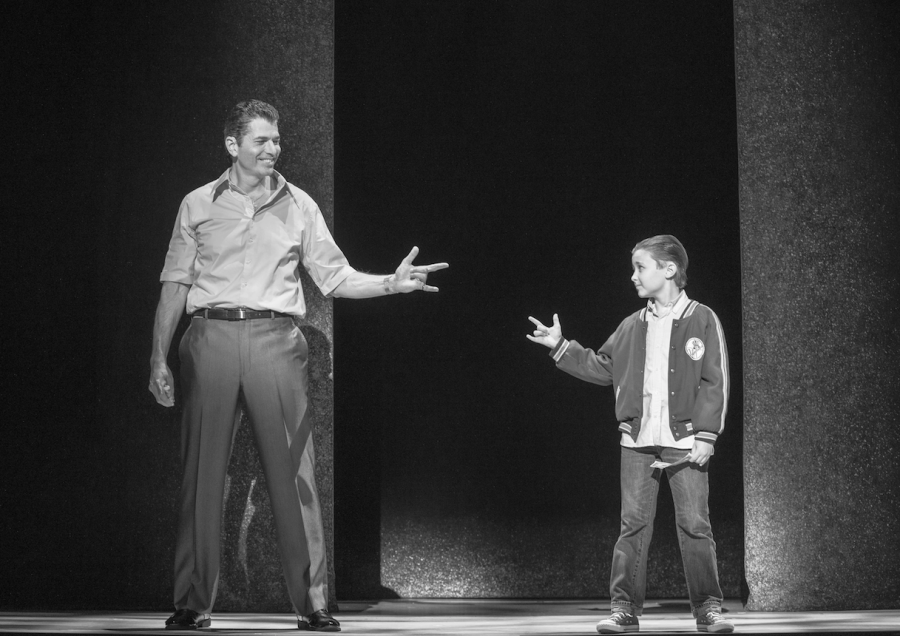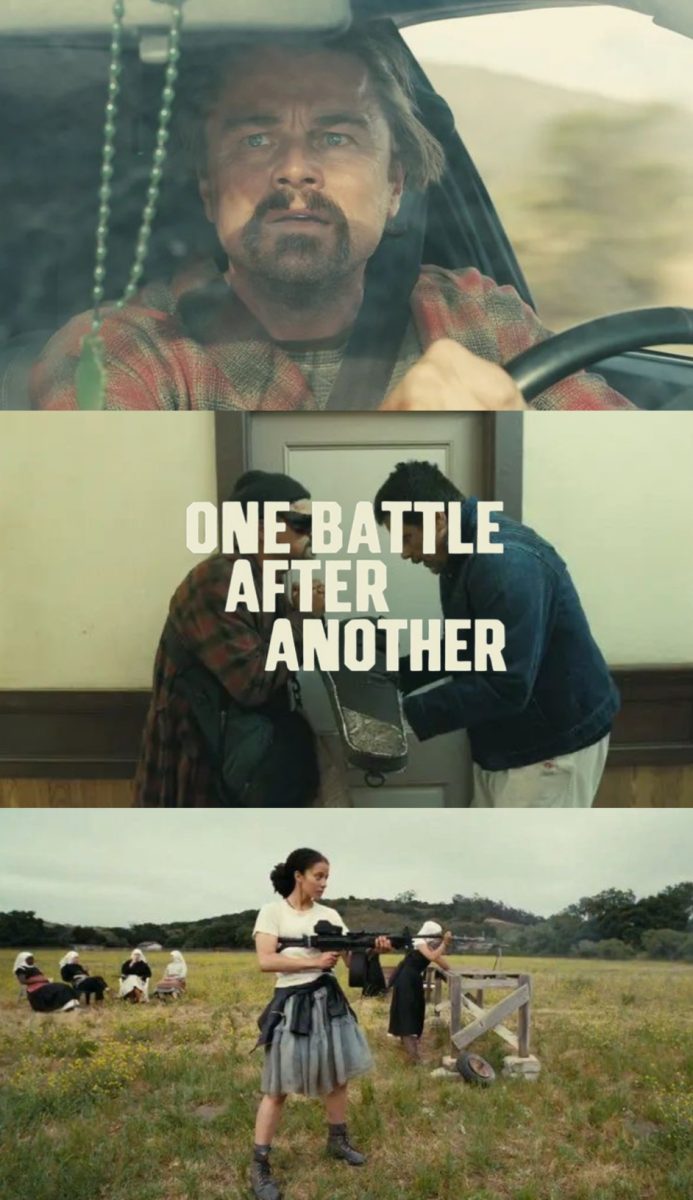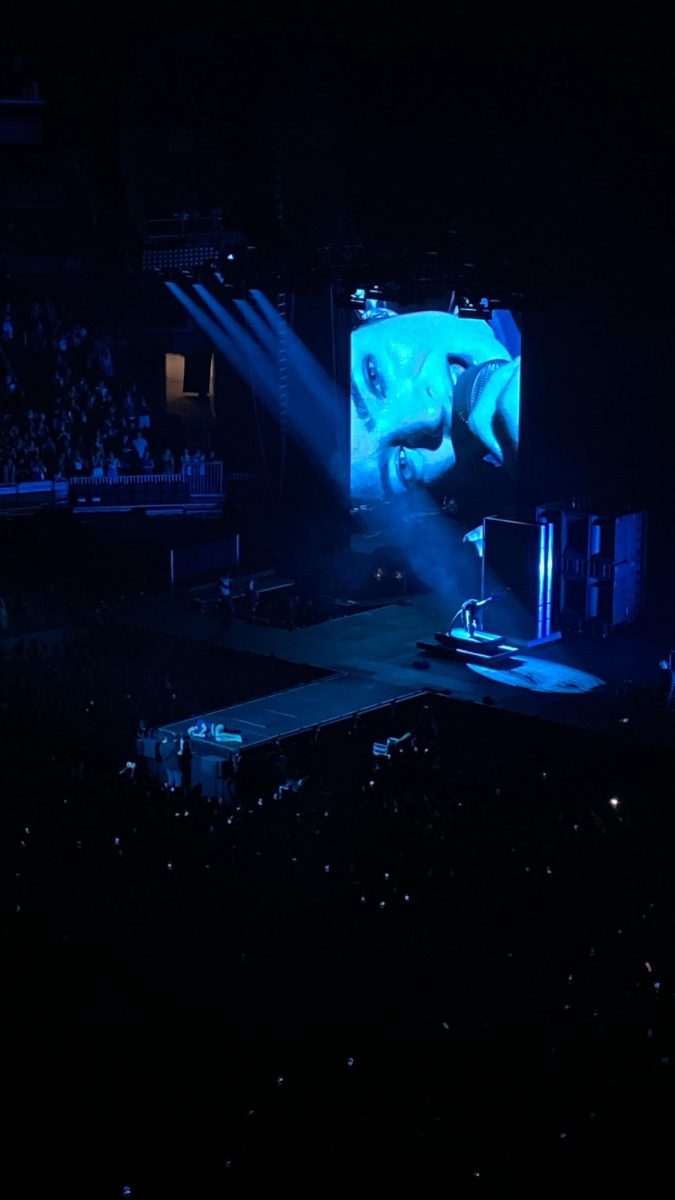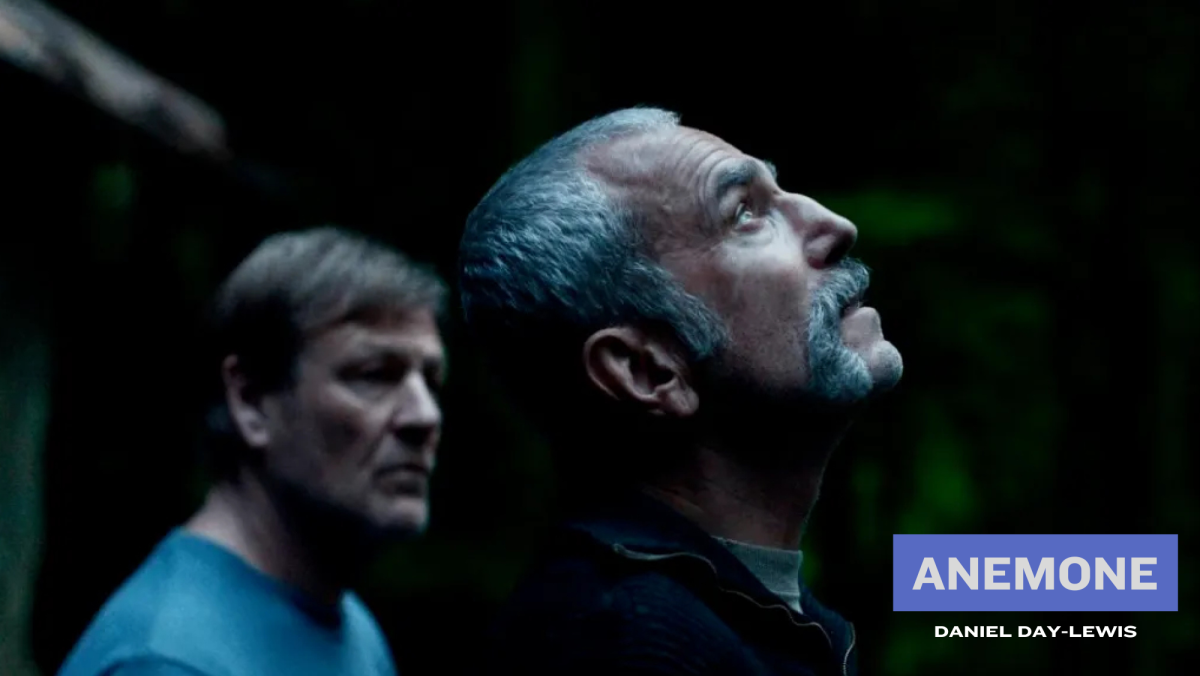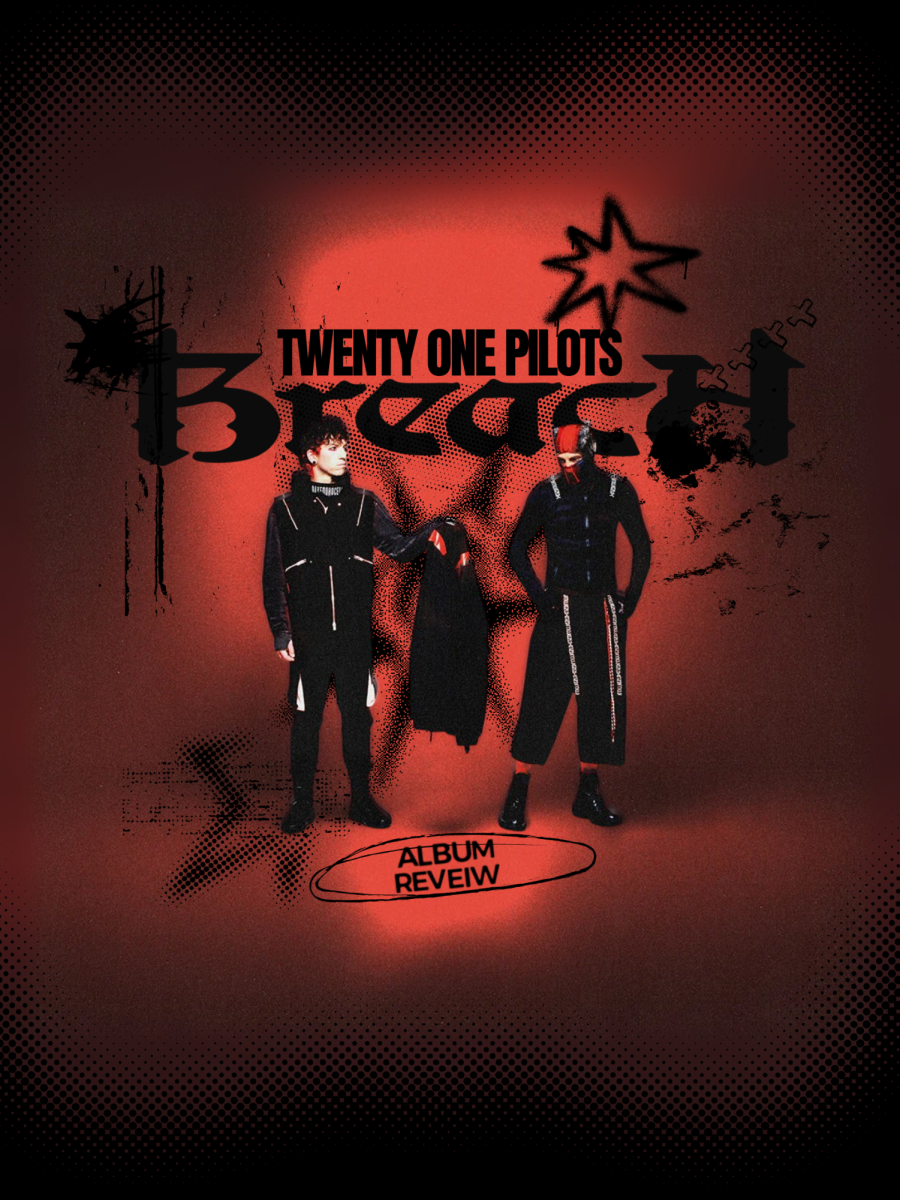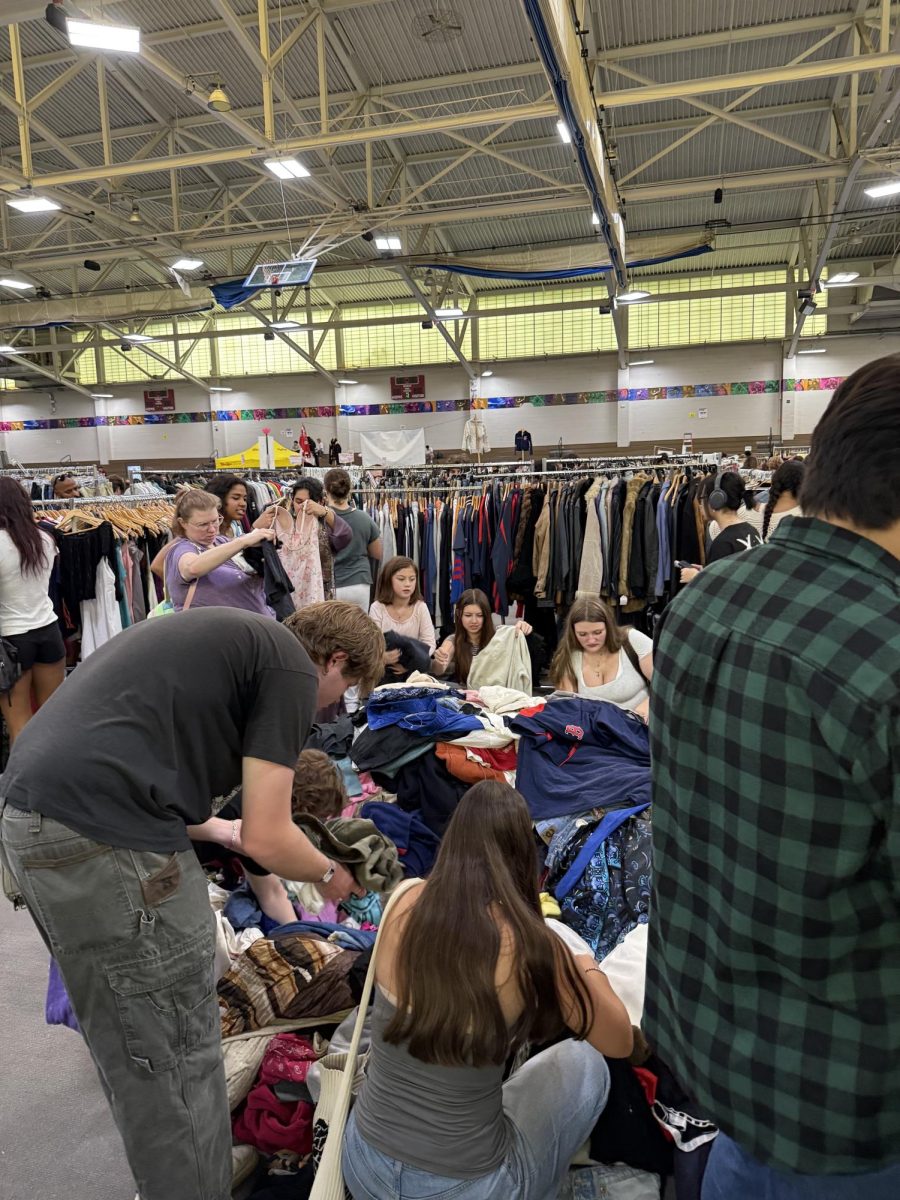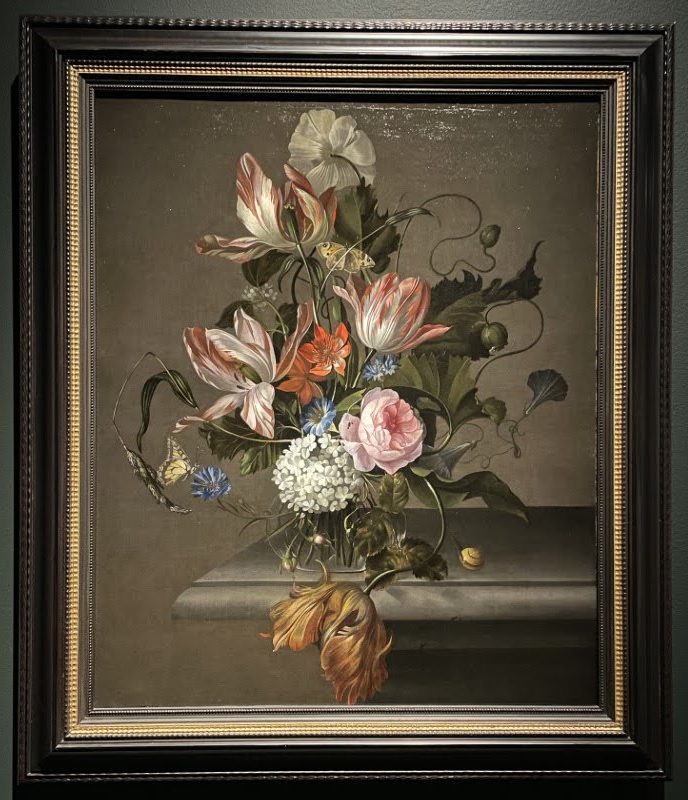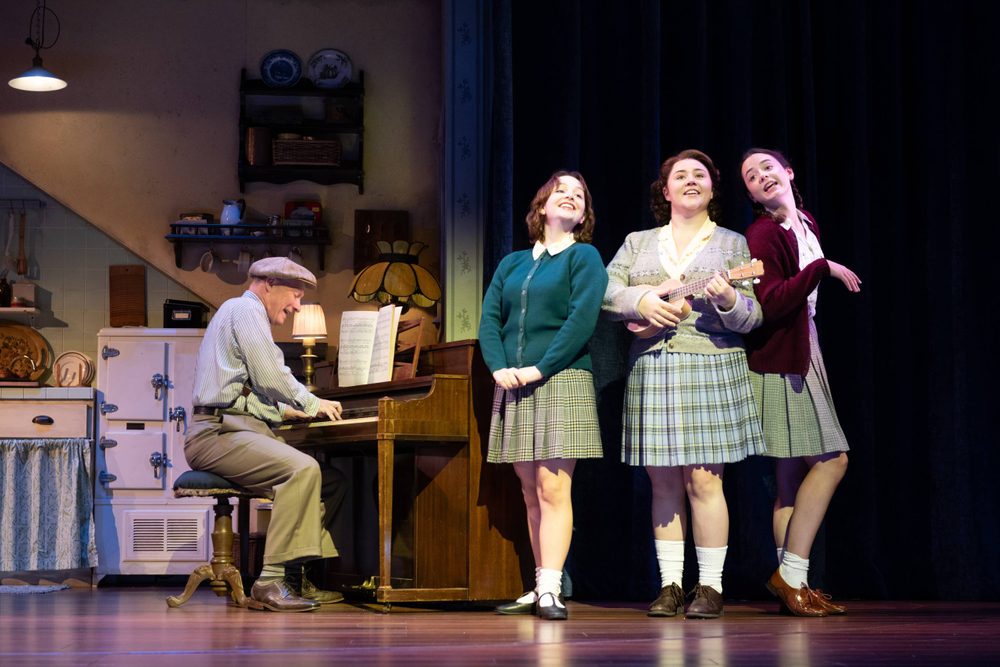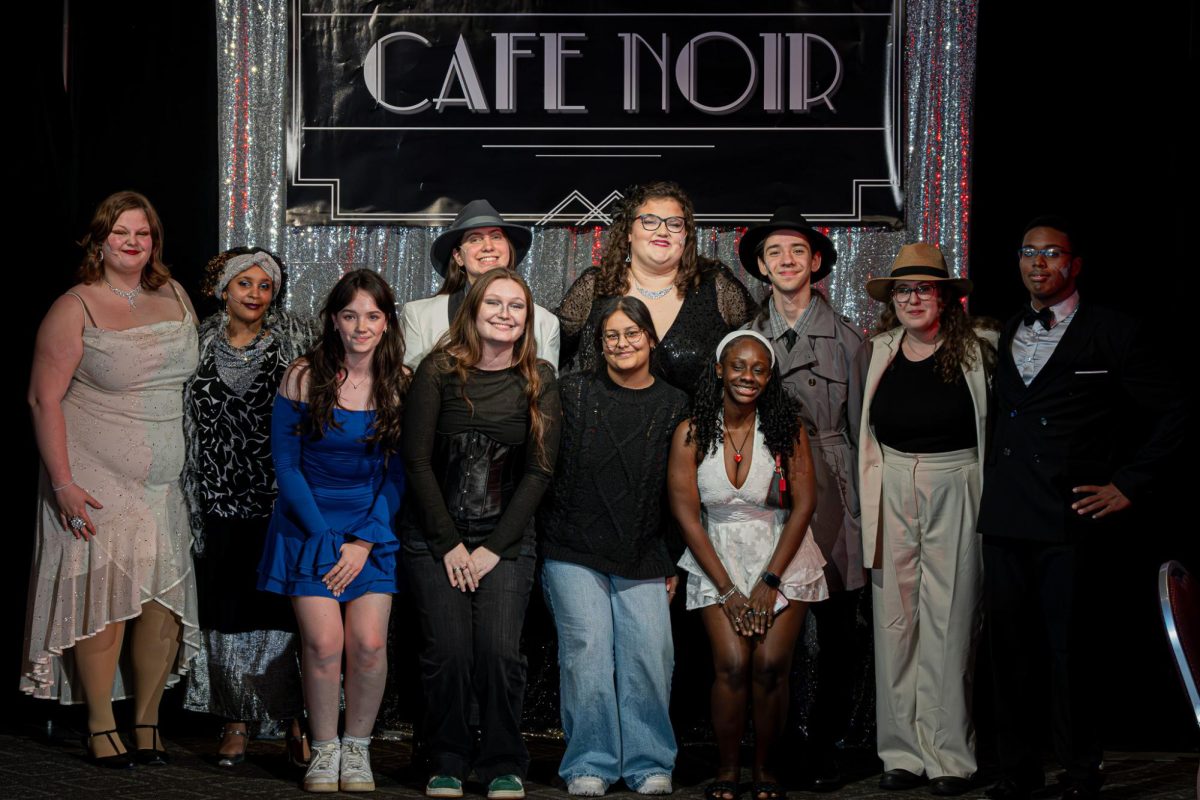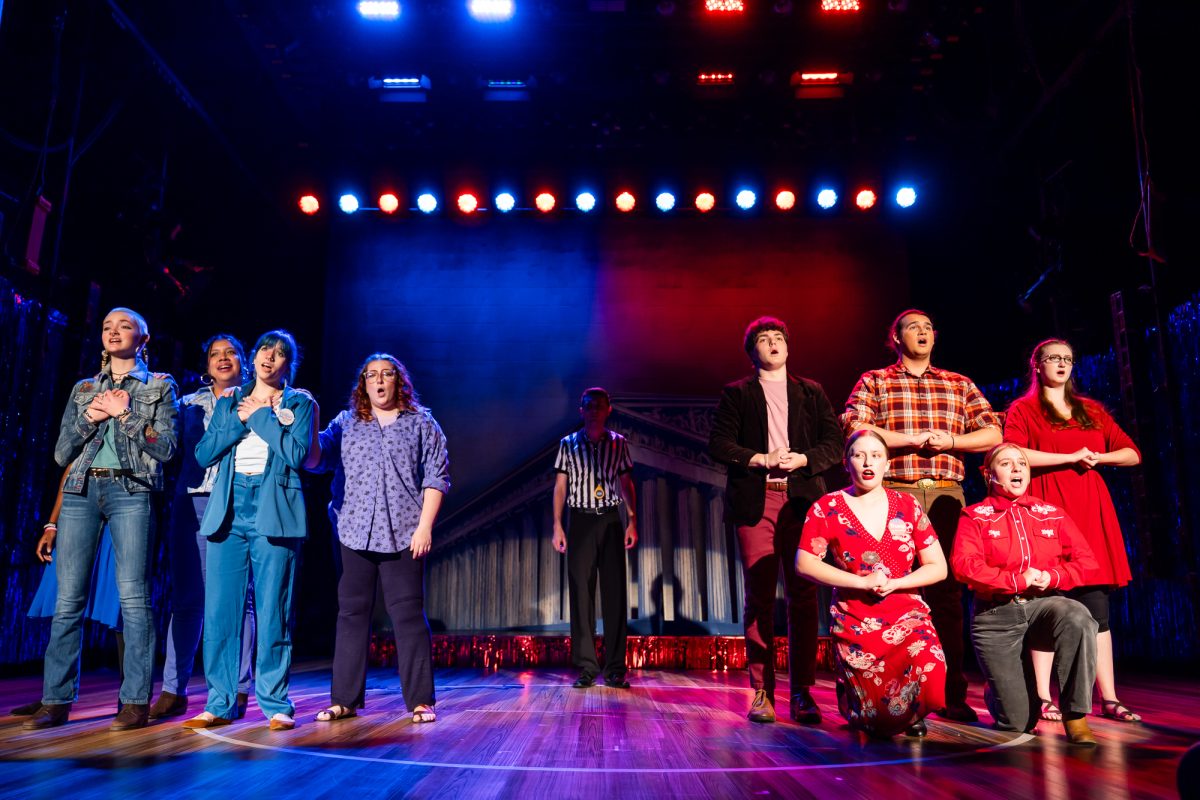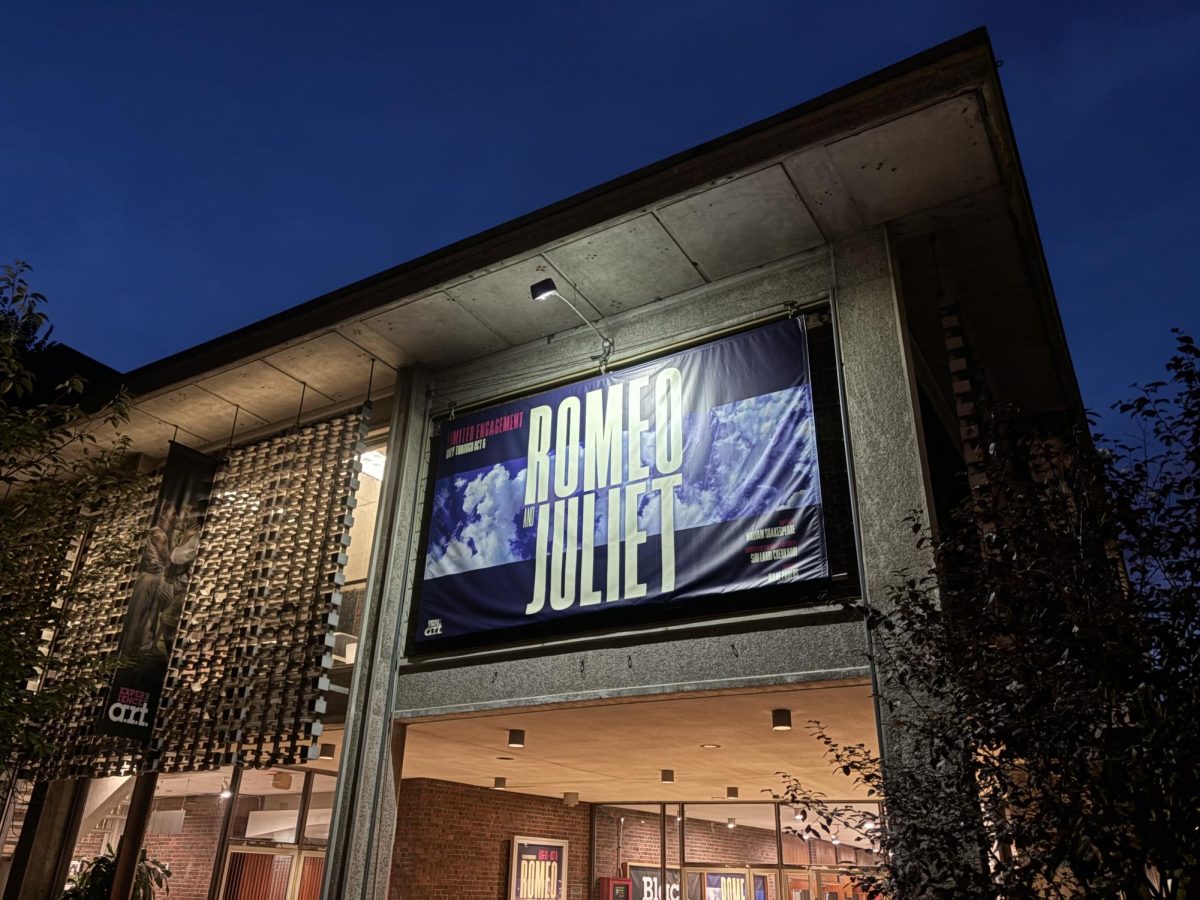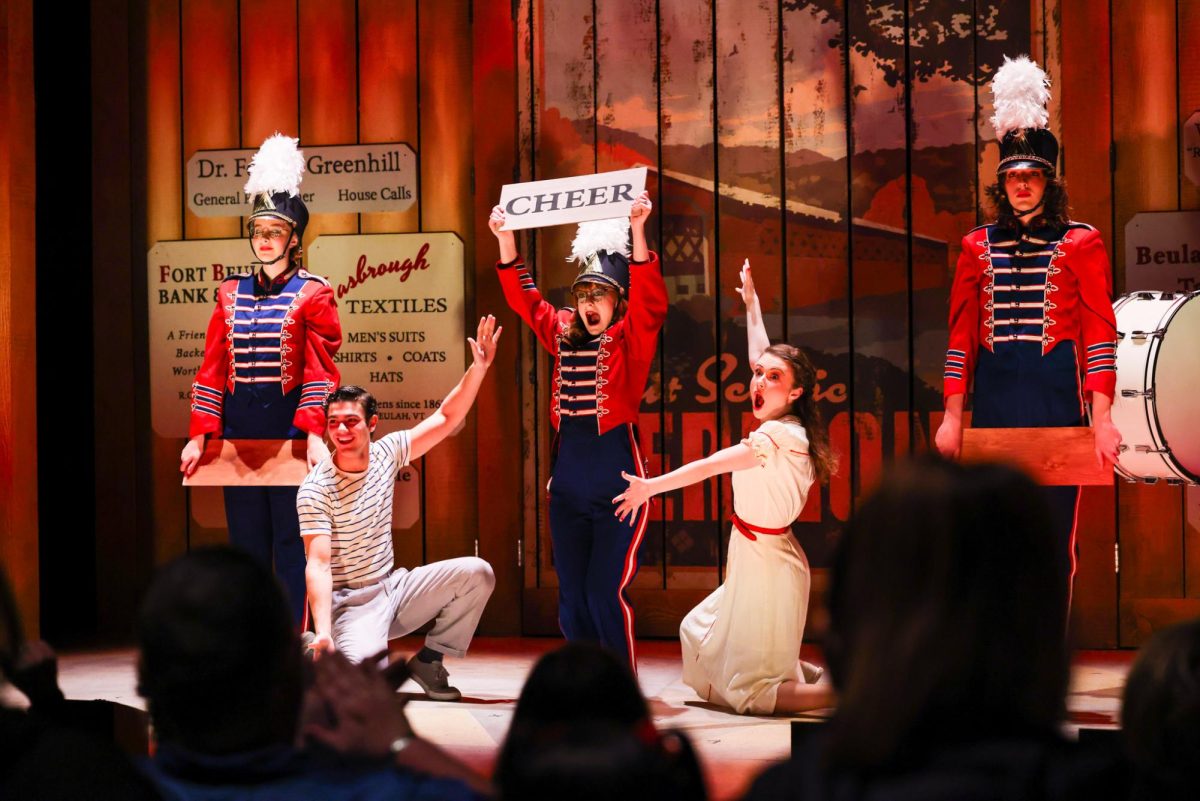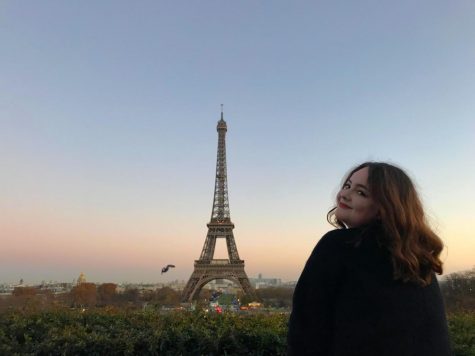“A Bronx Tale” transports audience members inside the Citizens Bank Opera House back to the 1960s, as the touring Broadway musical depicts a coming-of-age story about a young boy witnessing a murder and then spending his life helping a local gangster.
The show begins with Calogero, played by Joey Barreiro, setting the scene by describing his home on Belmont Avenue int he Bronx, a street that overflows with proud Italian culture from the butcher selling salami to the gangs running the neighborhood.
After young Calogero watches Sonny, a gangster played by Joe Barbara, kill a man in front of his house, Calogero’s life becomes intertwined with the mafia as he becomes the prized friend of the most feared gangster in town. The mobsters are shown as a comedically dysfunctional family instead of terrifying criminals.
Only once throughout the musical is Calogero put against them, and even then, he isn’t afraid of them.
This part of the musical was somewhat strange as a grown man fully welcomes a young boy into the hard life of being a gangster. Most of the characters have no problem with Sonny bringing Calogero into this life at such a young age, except for the boy’s parents, who are the only ones that seem to think realistically throughout the show. There were scenes where the plot felt rushed because characters acted rashly on their emotions, without considering the consequences.
Calogero’s parents, especially his father Lorenzo, a “working man” played by Richard Blake, do not want him to be a part of the dangerous gangster lifestyle. However, Calogero does not want to follow in his father’s footsteps as a bus driver. Despite Lorenzo explicitly stating he does not want his son to waste his talents, for some reason, Calogero thinks his father wants him to become a bus driver like him.
Amidst this dilemma, the protagonist quickly falls in love with a beautiful girl named Jane, played by Brianna-Marie Bell, who is from a predominantly African-American neighborhood on Webster Avenue. Sonny has no problem with Jane and Calogero’s relationship, but Calogero’s seemingly sweet-hearted father does have a problem with their interracial love.
The central plotline of the musical focuses on Calogero choosing between following the lead of his loving father or newly befriended, charming gangster.
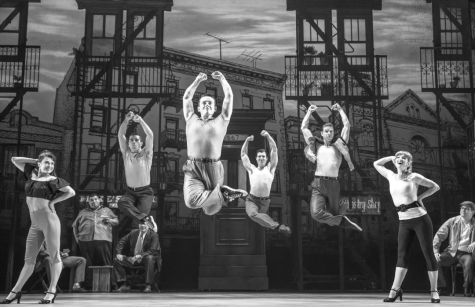
(Foreground, L to R) Haley Hannah, Joseph Sammour, Joshua Michael Burrage, Giovanni DiGabriele, Sean Bell, Kyli Rae. (Background, L to R) Robert Pieranunzi, Michael Barra, Paul Salvatoriello and Mike Backes.
The beginning of the show highlighted the romance between Calogero and Jane, but as the show continued, their love story was put on the backburner to focus on the conflict between the two neighborhoods. Other than the ending when Calogero described his love for Jane as “one of the great ones,” their relationship felt unfinished and was buried by the other parts of the show.
The score of the musical was unimpressive. It didn’t negatively affect the show but it didn’t add anything remarkable either. Music is used by directors to add more emotion behind scenes, and while the soundtrack did convey a message, it did not make the show more impactful or the audience more sympathetic. The songs simply repeated what the actors said in the previous scenes. The music seemed so out of place that it was questionable if this is even a musical, or just a play with some songs thrown in.
However, the cast’s voices always remained on pitch despite having to dance through many of the numbers, and they never seemed to run out of breath. Specifically, Barreiro’s voice was incredibly consistent throughout his many belting notes.
The stage design was minimalistic yet powerful. The use of a backdrop full of fire escapes and apartment stoops creates an easily believable metropolitan environment. A large mesh screen dropped in some scenes, revealing a glowing dark red building used to convey the tight-knit community of Belmont Avenue. The eye-catching set stood out to audience members, making it feel much more important than the individual characters.
The production ends with Calogero concluding his story by saying he left Belmont Avenue and returns sometimes to visit, without describing what he’s doing now or if he has left the mob life behind. The play does the title justice by indeed telling “A Bronx Tale,” a short story that leaves the audience needing more information to fully grasp the plot.
“A Bronx Tale” will run at the Citizens Bank Opera House as part of Broadway in Boston until April 14 and tickets can be purchased online or at the box office.


